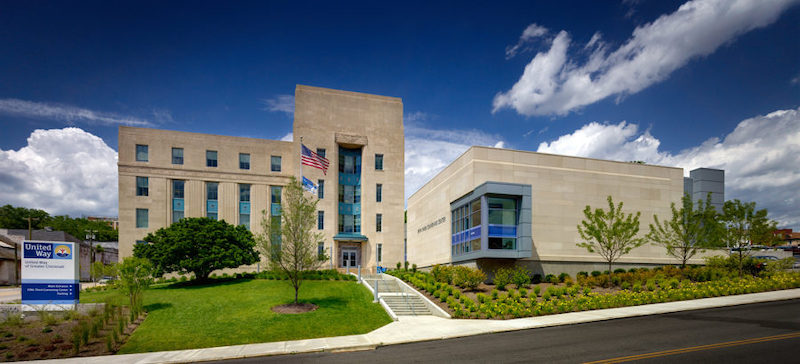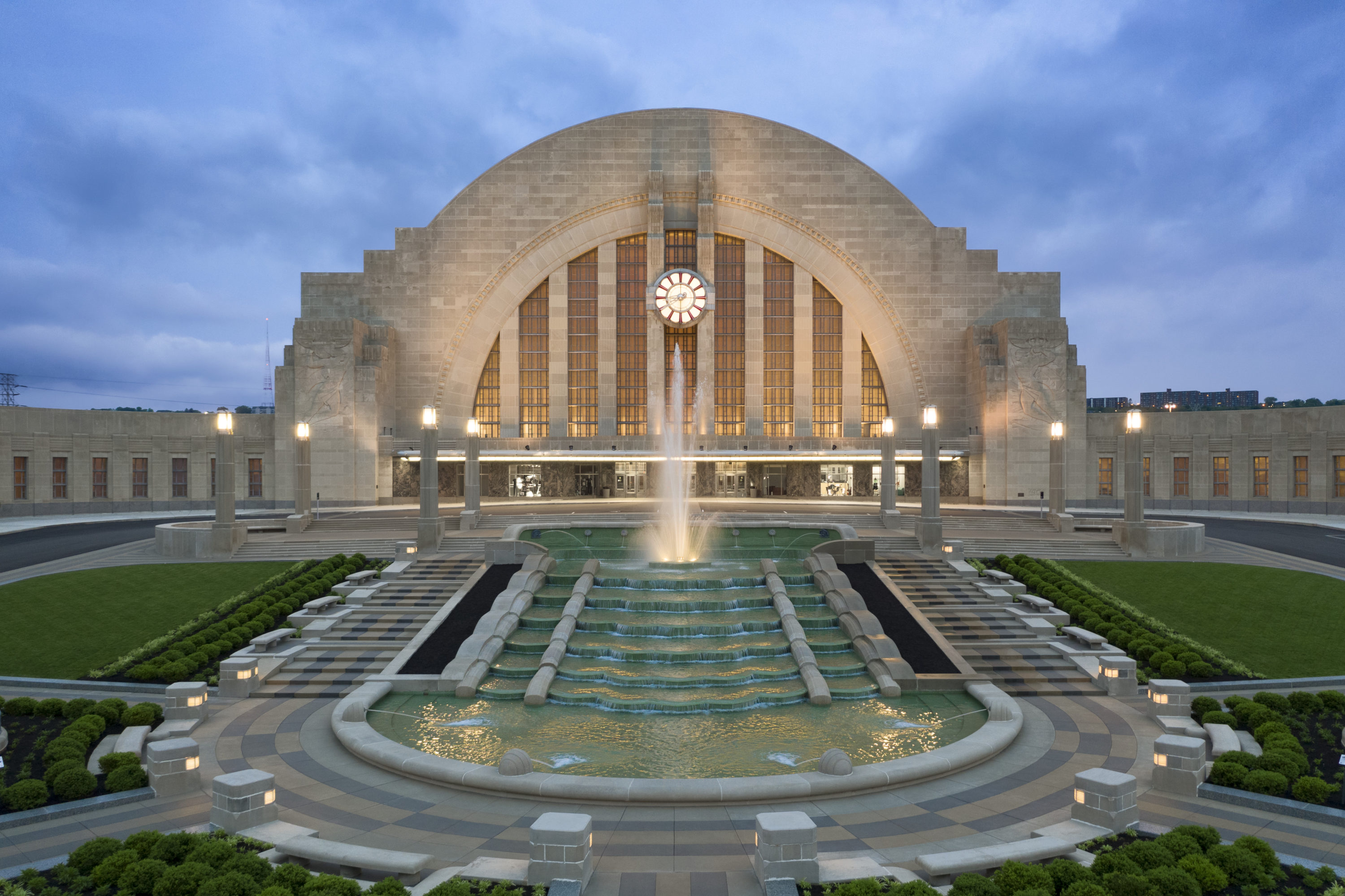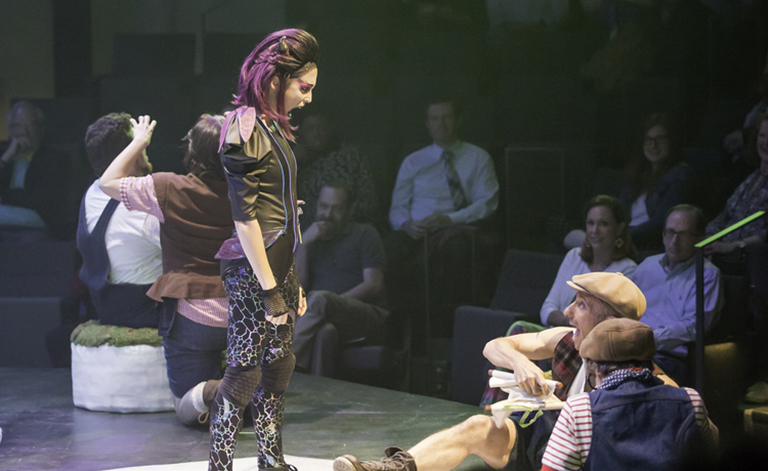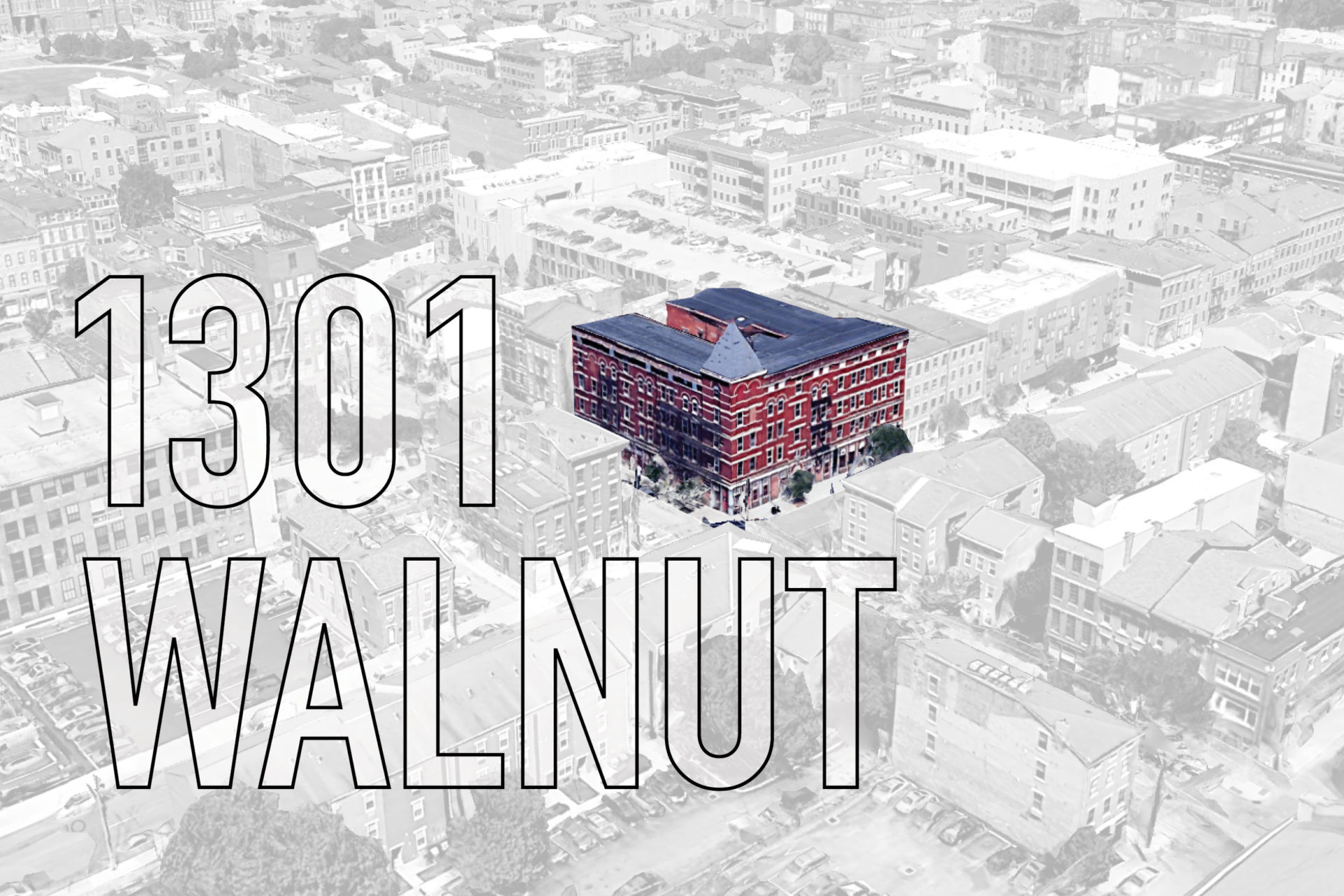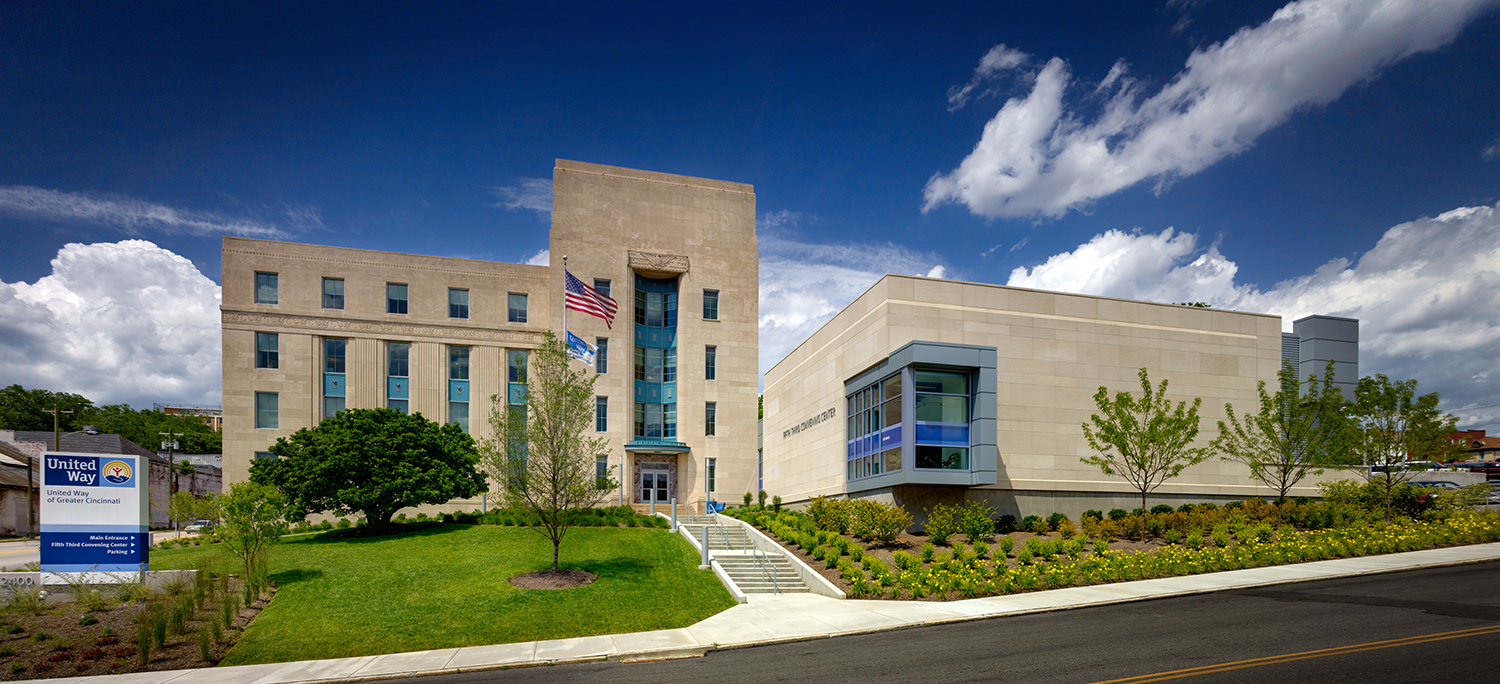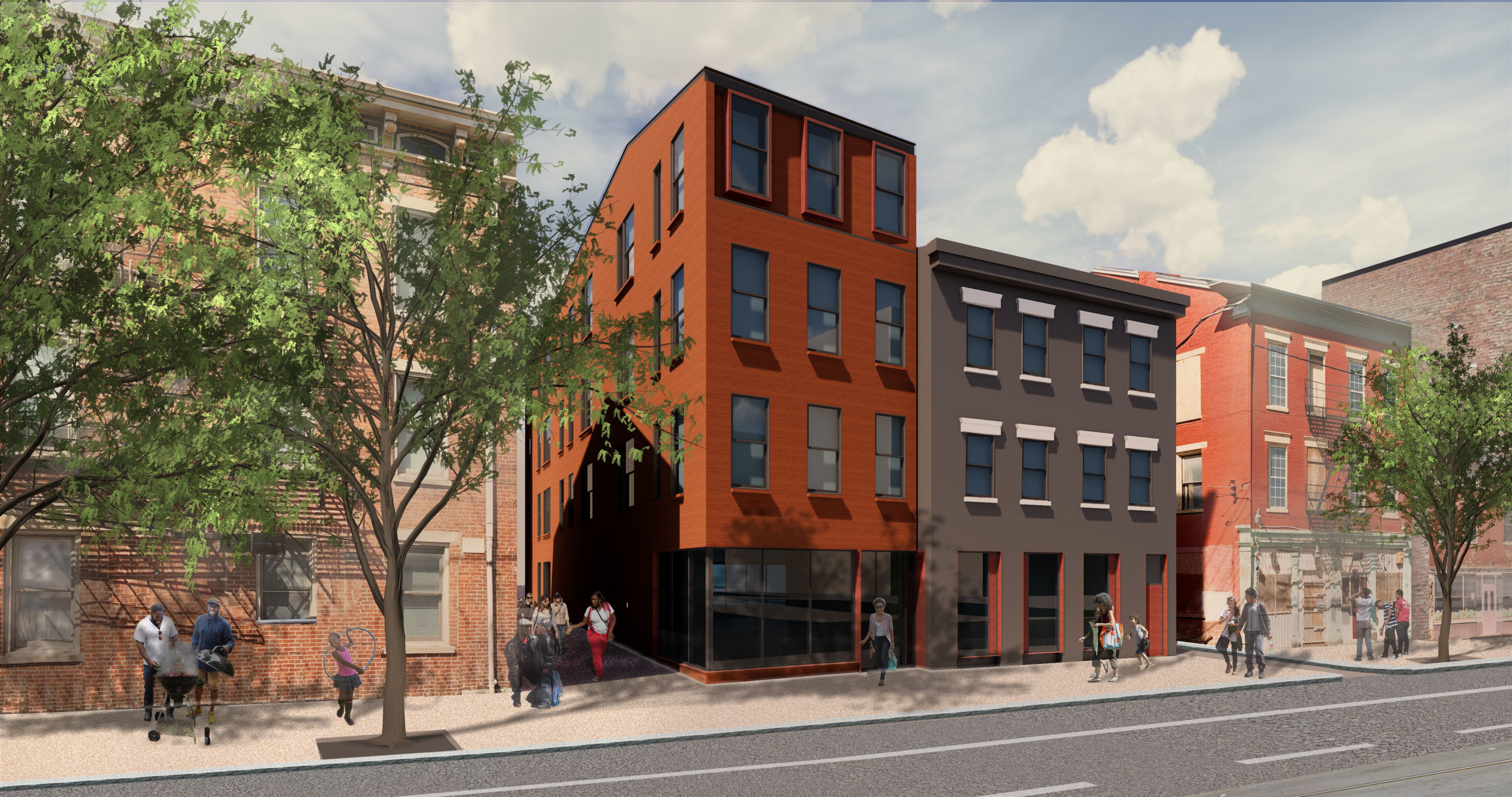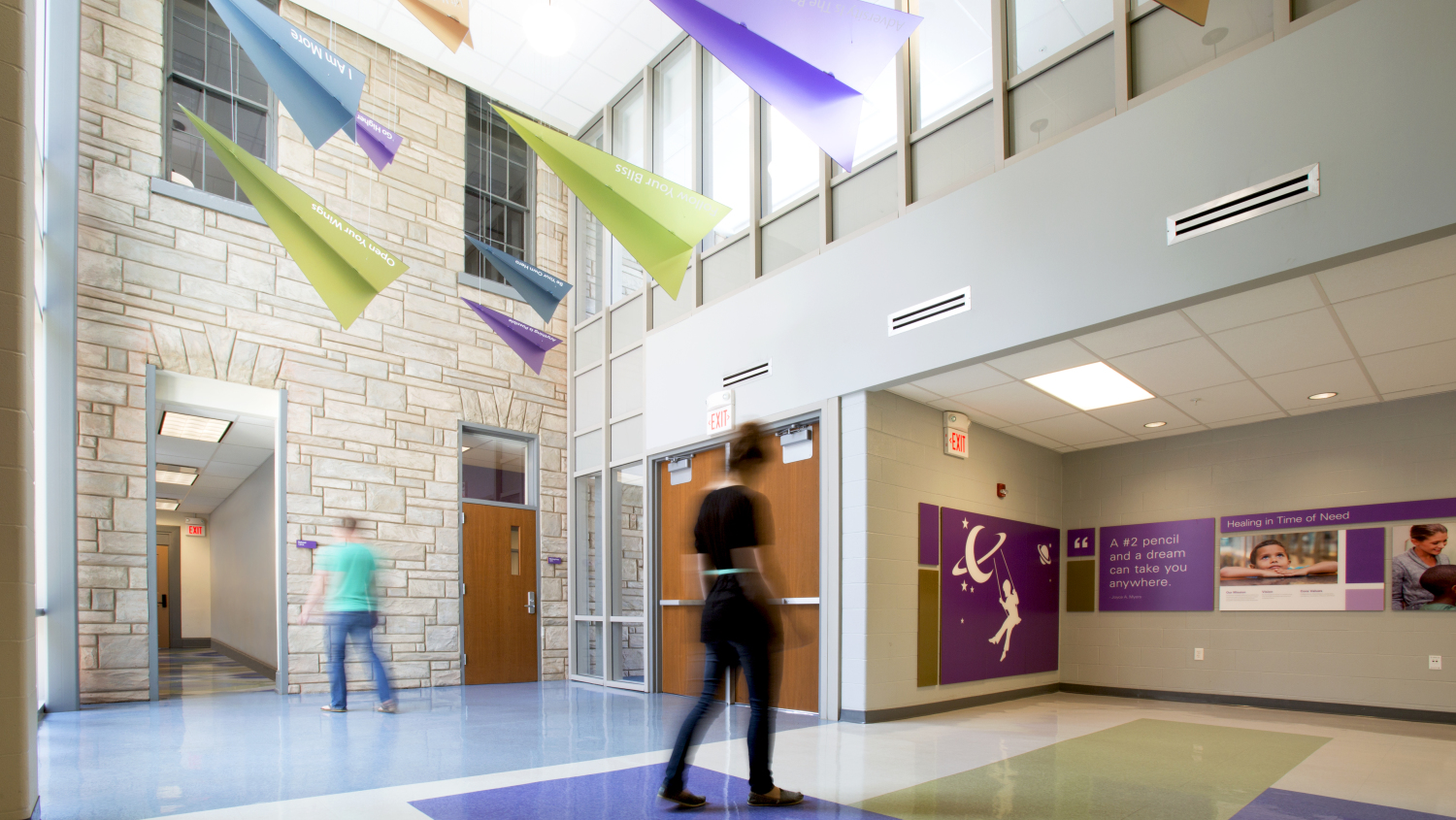Funding mechanisms like New Markets Tax Credits, Low Income Housing Tax Credits, and Historic Tax Credits are familiar tools to many—but not all— of our clients. Don’t make the mistake of assuming these mechanisms don’t apply to your organization. They can be equally valuable to commercial, institutional and non-profit organizations as catalysts for financial lending or capital campaigns.
We understand the requirements and applicability of tax credit funding tools and how these tools will impact the design of your project. Used in the right manner, these tools can help move your project from wish list to reality.
The following case studies illustrate some of the ways we’ve helped our clients navigate different tax credits.
CINCINNATI UNION TERMINAL
A four-year, comprehensive design & construction project has brought this 85-year old National Historic Landmark and treasured icon back to its original 1933 condition. The renovation meticulously repaired exterior and interior structural damage and included all new mechanical, electrical, plumbing, security, and data systems. Looking beyond preservation, included re-imagining the museum experience for 21st century visitors and beyond.
Funding mechanism used:
> Historic Tax Credits, Hamilton County Ohio Sales Tax Initiative
How did we help?
The Cincinnati Union Terminal (CUT) project received almost $45M in Historic Tax Credits (HTC) via separate federal and state (Ohio) awards. We engaged a preservation architect to assure the design and construction conformed to National Park Service and Secretary of the Interior guidelines for historic buildings in the preservation and reinvention of this National Historic Landmark. Preservation of CUT’s iconic fountain and rotunda, murals, and other historic elements required extensive research, evaluation, and meticulous accuracy. But we also worked to re-invent the museum-going experience for future generations. For that we had the flexibility to modify the program and redesign spaces that improved patron experiences and offered modern amenities.
While the project would not have happened without the HTC’s, the real heroes of this project are the citizens of Hamilton County, Ohio. In 2014, GBBN began working on the Cultural Facilities Task Force investigating the project scope. We strategized with Hamilton County Commissioners on how the renovation of this treasured building might be partially funded through a sales tax, including cashflow projections and accrual of funding. Thanks to a highly successful campaign, in which county taxpayers voted in favor (by 63%) for a ¼% sales tax for a 5-year period, $170M was provided towards the project.
CINCINNATI SHAKESPEARE COMPANY
The Cincinnati Shakespeare Company (CSC) connects audiences to the exhilaration of live performance. Their new, contemporary theater, located in Cincinnati’s historic Over-the-Rhine neighborhood, helps them increase their community impact through performance, outreach, and hospitality. The new theater has also helped cement CSC’s (and Cincinnati’s) reputation as a nationally recognized arts destination.
Funding mechanism used:
> New Markets Tax Credit
How did we help?
CSC’s mission of education, community-building, and outreach, and their location in Cincinnati’s Over-the-Rhine neighborhood (a low-income housing zone) made them a great candidate for New Markets Tax Credits (NMTC). GBBN’s experience in working with NMTC’s on other projects helped CSC navigate the application process to secure these credits. NMTCs filled a gap in their capital campaign with a $7M allocation from Cincinnati Development Fund. Filling this gap helped kickstart their campaign and construction. We created for CSC a strategic set of milestones and staggered construction drawing packages to align with the necessary approvals deadlines that the NMTC financing required.
1301 WALNUT STREET
GBBN is working with the Cincinnati Center City Development Corporation (3CDC) and HGC Construction to breathe new life into the Columbia Building at 1301 Walnut Street in Cincinnati’s historic the Over-the-Rhine (OTR) neighborhood. The mixed-use project will bring retail space, and both market-rate and affordable housing to the neighborhood.
Funding mechanism used:
> Historic Tax Credits
How did we help?
Because the pool of applicants for historic tax credits changes every year, competition for available credits changes every year. Our first step is always to work with the client to determine if the project is a good candidate. Our experience helping clients navigate the process means we understand how to evaluate and convey the significance of historic structures through drawing and narrative, all while staying on top of critical deadlines. Careful planning, and close collaboration with Ohio’s Historic Preservation Office, are key.
At 1301 Walnut (currently under construction), we worked with the Department of Transportation and Engineering and the city of Cincinnati to facilitate sidewalk changes that allowed us to design historically appropriate, accessible entrances. During construction on historic projects, it’s not unusual for surprising conditions to occur. When that happens, we’re able to creatively find solutions to keep construction moving forward, while meeting the requirements necessary for historic tax credits.
UNITED WAY OF GREATER CINCINNATI
By supporting the health, education, and financial stability of every person in the community, United Way of Greater Cincinnati (UWGC) provides a much-needed safety net for people who wouldn’t otherwise have one. Like many social profit organizations, UWGC prioritizes the people they serve over their own workspace.
UWGC recognized that by renovating and expanding their historic headquarters building, they could achieve two key goals: improve internal team collaboration and bring new donors, community leaders, and volunteers into their story. A renovation would also enable UWGC to offer better quality workspace for their tenants—organizations like Big Brothers Big Sisters of Cincinnati and LISC Cincinnati—that occupy two floors of the building.
Funding mechanism used:
> New Markets Tax Credits
How did we help?
GBBN created a financial strategy with UWGC and financial lenders to deliver NMTCs to fully fund the project with allocations of $16M each—two separate Community Development Entities from outside the region (One in California and one in St. Louis) awarded the project $8M each. The budgets, drawings, and renderings we created helped establish the project as “shovel ready” and connected UWGC’s mission to appropriate funders. The project’s timing (during the 2008 recession) allowed them to take advantage of federal stimulus investments in the NMTC program as well as a positive construction cost climate that maximized their resources. The terms of their allocations gave UWGC seven years to raise the money to pay back the allocations, which they were able to do more easily from their renovated space.
WILLKOMMEN
Working within defined zoning, historic guidelines, and building space requirements, Willkommen is a distinctly contemporary project that enhances the character of the surrounding streetscape. An affordable housing development that is distributed across multiple sites, Wilkommen consists of 11 historic renovations and 4 new mixed-income, mixed-use buildings in Cincinnati’s Over-the-Rhine neighborhood. This project represents the community’s largest addition of affordable housing in years.
Funding mechanisms used:
> Low Income Housing Tax Credits
> New Markets Tax Credits
How did we help?
Low Income Housing Tax Credits (LIHTC) come with strict requirements for sizing different types of spaces. This project is also in an urban historic district that has its own strict guidelines. Another layer is the dual ownership structure of the project: One developer controls the residential portion and one controls the street level retail. If that sounds like a lot of spinning plates, it is. But our history of working on projects with competing design parameters and complex stakeholder structures allows us to find great design solutions and facilitate buy-in from multiple parties.
ST. ALOYSIUS
Originally built in 1861 as an orphanage, St. Aloysius today is a campus of seven organizations—including educational, behavioral health, and foster care services— that sustain St. Al’s 180-year mission to serve children and families in the greater Cincinnati area.
Funding mechanisms used:
> New Markets Tax Credits
> Ohio Historic Tax Credits
How did we help?
GBBN established a Master Plan and implementation for improvements to their historic building and campus in Bond Hill. Preservation of the building’s exterior character was of utmost importance, as well as improving classroom and administrative space, incorporating sustainable design, integrating high-efficiency systems, and leveraging the building’s visibility and its prominent site.
To ease the burden of a capital campaign for the $10M expansion and renovation, GBBN brought together a team to utilize Historic and New Markets Tax Credits as a funding strategy. This included establishing a new ownership structure for the building that allowed the organization to become a tenant, created new income producing lease spaces allowed by the new construction of a modern classroom expansion, marketed the project to investors, and set up a campaign strategy of spaces for donor recognition opportunities. Our team also worked with HGC Construction and the Ohio’s Historic Preservation Office to document and renovate the building to National Park Service standards.
Related Stories
| Aug 11, 2010
University of La Verne opens new campus center designed by Gonzalez Goodale Architects
Construction has been completed on a new campus center designed by the noted Pasadena-based institutional architecture firm Gonzalez Goodale Architects for University of La Verne that will help create a new identity for the venerable institution. The Sara & Michael Abraham Campus Center will be dedicated on September 10 at 3 p.m., in a ceremony attended by campus officials and other local dignitaries.
| Aug 11, 2010
Thom Mayne unveils 'floating cube' design for the Perot Museum of Nature and Science in Dallas
Calling it a “living educational tool featuring architecture inspired by nature and science,” Pritzker Prize Laureate Thom Mayne and leaders from the Museum of Nature & Science unveiled the schematic designs and building model for the Perot Museum of Nature & Science at Victory Park. Groundbreaking on the approximately $185 million project will be held later this fall, and the Museum is expected to open by early 2013.
| Aug 11, 2010
SOM's William F. Baker awarded Fritz Leonhardt Prize for achievement in structural engineering
In recognition of his engineering accomplishments, which include many of the tallest skyscrapers of our time, William F. Baker received the coveted Fritz Leonhardt Prize in Stuttgart, Germany. He is the first American to receive the prize.
| Aug 11, 2010
Theater Renovation—A First-Class Production
In 1985, the city of San Diego ordered the historic Balboa Theatre, its beleaguered performing arts center, to be shuttered due to seismic safety concerns. It would take another two decades to restore the landmark building.
| Aug 11, 2010
Green roof professional designation launches in Canada
Green Roofs for Healthy Cities (GRHC), the North American Green Roof Industry Association, is pleased to announce the Canadian Green Roof Professional (GRP) Accreditation launch on October 19, 2009 at the CitiesAlive World Green Roof Infrastructure Congress in Toronto, Canada, hosted by GRHC, the City of Toronto, and the World Green Roof Infrastructure Network.
| Aug 11, 2010
American Concrete Institute forms technical committee on BIM for concrete structures
The American Concrete Institute (ACI) announces the formation of a new technical committee on Building Information Modeling (BIM) of Concrete Structures.
| Aug 11, 2010
Former Colorado Governor Bill Owens retained by PCL Construction as senior advisor
Bill Owens, former Colorado Governor, has been retained by PCL Construction as senior advisor for the company’s U.S. operations, headquartered in Denver, Colorado. The PCL family of companies collectively form the seventh largest contracting organization in the U.S. with major offices in 29 locations across North America, the Hawaiian Islands, and the Caribbean.
| Aug 11, 2010
Kansas City Music Hall and Municipal Auditorium
Kansas City, Mo.
The show will go on in Kansas City’s beloved Music Hall and Municipal Auditorium thanks to a fast-track renovation and expansion project that brought the 72-year-old Art Deco playhouse up to 21st-century standards.


